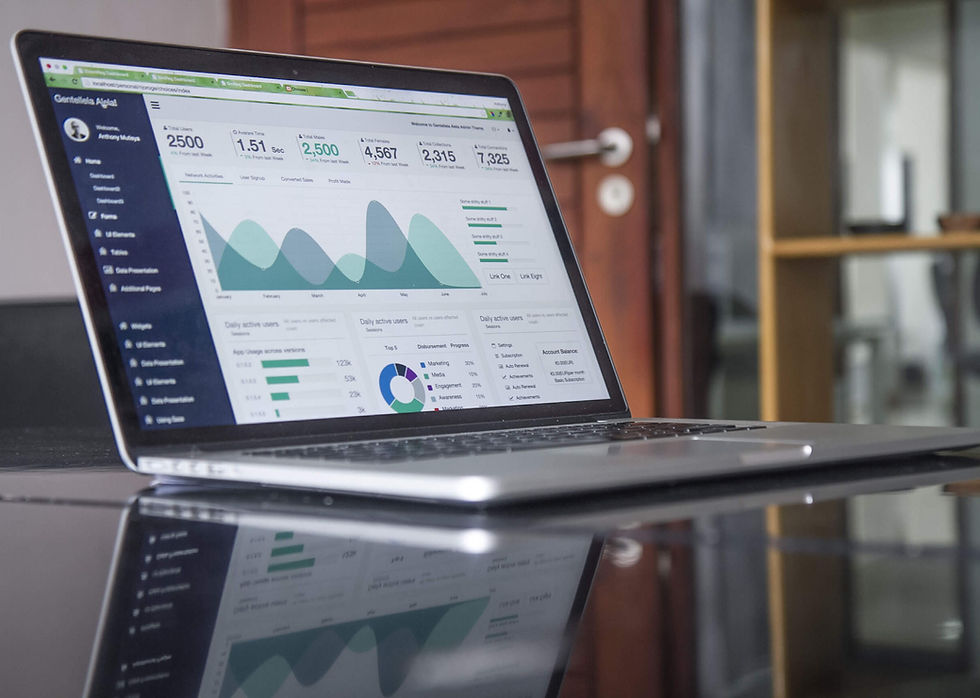5 Smart Retail Technologies That Elevate Shopping Experience
- Dayta AI
- Sep 28, 2020
- 3 min read
Updated: Dec 16, 2020
The advent of smart technologies, including artificial intelligence (AI), machine learning (ML), and Internet of Things (IoT), is changing the landscape of retail. These technologies enabling immersive and frictionless experiences and rapid access to personalized preferences. Retail success is no longer driven by well-merchandised brick-and-mortar stores. The integration of retail outlets with digital experiences now plays a vital role than ever before.
According to Valuates Report, in 2019, the global Smart Retail market size was USD 12.410 billion and is projected to reach USD 30.730 billion by the end of 2026, at a CAGR of 13.7% in the 2021–2026 period. This remarkable growth demonstrates how smart retail will become the norm in the near future.
This article introduces a few smart retail technologies that will transform shopping:
1. Frictionless POS systems

Gradually, mobile payments will replace traditional forms of transactions. Synchrony predicts that 60% of U.S. consumers will be carrying a phone but no physical wallet by 2025. The integration of digital wallets and retailer apps is expected to propel transactions due to flexible and extensive purchase capabilities. According to BDO’s 2019 Consumer Beat Survey, 44% of consumers have or would use mobile payment options, and that number is expected to increase when examining behaviors of millennials and Generation Z.
Frictionless payment systems are also crucial for retailers that have multiple sales channels, including both brick-and-mortar and e-stores. They will need to sync both online and offline transactions, inventory, and promotions.
2. Machine learning for demand forecasting

Many retail businesses are currently contemplating leveraging big data. Machine learning can be utilized to optimize customer relationship management, logistics processes, and demand forecasting. Compared to traditional forecasting methods, machine learning-based models are more adaptable to changes and faster to implement. This feature makes machine learning-based demand forecasting more suitable to today’s fast-changing retail landscape.
Furthermore, by optimizing demand forecasting systems with machine learning models, POS data, and external data (exchange rates, market states, economic factors), it is possible to enhance demand forecasting accuracy. That is what makes machine learning-powered demand forecasting a valuable approach to smart retail.
3. Augmented shopping

Gartner predicted in 2019 that by 2020, up to 100 million consumers are expected to use augmented reality in their shopping experiences. The social distancing due to COVID-19 pandemic has rapidly increased the demand for augmented reality systems. Several brands that have embraced AR long before the pandemic are offering customers an enhanced experience. Lacoste, American Apparel, and Uniqlo set up virtual showrooms and fitting rooms to allow shoppers to try products in virtual spaces. IKEA is also using AR apps to help customers determine if the furniture they want to purchase will fit and look good at their home. In the future, extended reality will eventually enable consumers to be able to share their virtual reality shopping experience with others.
4. Data science-based personalization

Data science has made significant contributions to today’s personalization tools. Data science and machine learning-powered engines can make personal recommendations to customers even before they figure out what they want for themselves. According to Amazon, up to 35% of its sales are driven by its recommendation engine.
In-store options are catching up to online ones quickly. The driver of this is advancement in technology such as Bluetooth Low Energy, RFID, and computer vision, enabling the deployment of low-power consumption solutions throughout stores. By collecting data about customers’ shopping behavior, retailers can gain a better understanding of their customers and offer more personalized products and services.
FashionAI, a technology built by Alibaba Group, generates personalized mix-and-match apparel recommendations for shoppers as they move around stores. The FashionAI technology can identify the fashion elements including color, styles, attributes (such as short or long sleeves, round or V-neck neckline) of a particular fashion item picked up by a customer, and then provide AI-based mix-and-match recommendations on the smart mirror inside the store.
5. Staff and cashier-free stores

The 1800 square foot Amazon Go store in Seattle is the epitome of cashier-free stores. Customers can come to the store using just a credit card without any account to be created or app to be installed. Once they are in, they can enjoy shopping as they would in a normal grocery store, while an IoT-based system tracks them in a virtual cart. When the shopping is completed, all purchases will be automatically paid once the customer leaves the store. Taking it one step further, it is also possible to develop a touch-free shopping system. By scanning bar codes and QR codes, customers can receive information about desired products through a smartphone, thus, reducing direct interactions in-store.
Cyclops is a retail analytics system that can help retailers generate insights into how their customers shop inside their stores. To understand more about how Cyclops can help retailers digitally transform their stores amid the COVID-19 pandemic, visit our website: https://dayta.ai



Comments